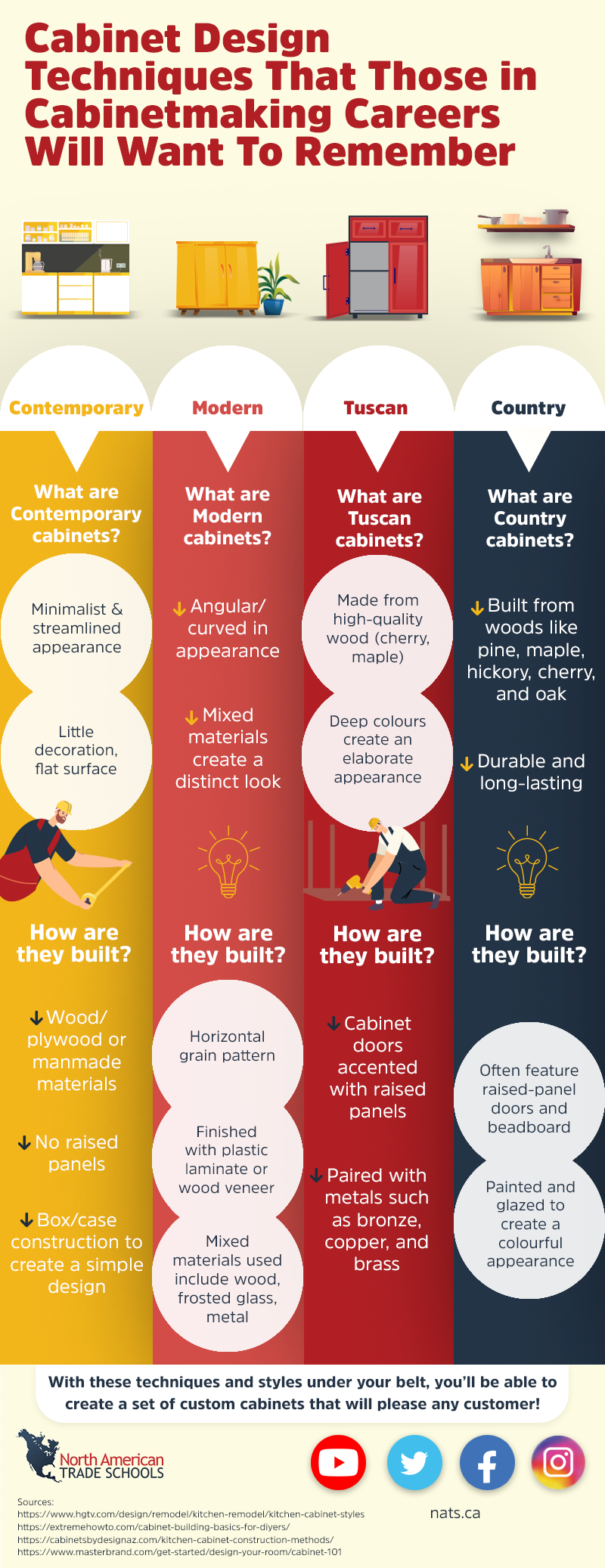Author: toppyhem

Home inspectors play a crucial role in the home-buying process by providing information to prospective home buyers about the conditions of the properties that they are interested in purchasing. These professionals carefully analyze every aspect of a property, including the electrical system, plumbing, roofing structure, heating, heating pumps, and the overall exterior and interior. A home inspector may also suggest solutions to problems they may see so that future homeowners can anticipate other costs associated with the house.
One of the great things about becoming a home inspector is that you can work independently and start your own business. However, starting a home inspector business can be challenging, so a clear plan needs to be devised and executed for the business to succeed. Are you considering starting your own business after home inspector training? Read on for some essential tips to consider.
Develop a Plan for Your Future Home Inspection Business
Every new business should have a plan set up to help guide the journey. A clear outline and goals will help drive your business idea forward after home inspector training. Your training will provide the knowledge and expertise you’ll need to thrive when starting your own business since you will have the skills to carry out jobs successfully.
A business plan will be useful for approaching banks and investors, walking them through your services, financial projections, marketing plans, and your overall strategy for achieving success. A good business plan must include the following components:
- An executive summary
- A description of your business
- Strategy and market analysis
- A good marketing and sales plan
- Your business management plan
- Descriptions of your services
- A thorough analysis of your competition
- Details on how you plan to operate your business
- Your financial needs and projections
- Documents and other items investors might want to see (permits, financial documents, marketing materials, etc.)

Effective Marketing That Sets Your Home Inspection Business Apart
Marketing is an effective way to promote your home inspection business so that home buyers are more likely to find your business instead of a competitor. Utilizing social media and a well-designed website will allow you to stand out from the competition.
Posting regularly and staying active on social media can help you build brand recognition as well as your following. Some ideas for social media posts include providing home buying and inspection tips to prospective clients and sharing customer reviews and testimonials. You can also share general content about your business and yourself, including any achievements from your home inspector courses. Some social media platforms you can make use of include Facebook, Instagram, and TikTok.

It’s also important to have a professional website for your business, where potential clients can find your contact information online, as well as other important details about your business, including prices, services, and more. Additionally, once you have a website, you can delve deeper into your marketing by creating a blog page with helpful information for clients, and you can optimize your site for SEO so that your business will be easier to find on search engines.
Contact Real Estate Agents After Home Inspector Training
Connecting with real estate agents can be mutually beneficial. Since real estate agents have access to multiple listings and clients interested in buying homes, they are in an ideal position to recommend your business to their clients. On the other hand, a home inspection is a critical part of buying a home, and real estate agents know that clients will need to have one conducted, so knowing a home inspector they trust and can recommend benefits them as well.
Maintain relationships with people you meet in your home inspector courses, as well as your clients and real estate agents you meet or have already worked with. This will help you meet more people in the industry and continue to build meaningful connections, and grow your network.
Do you want to become a home inspector?
Contact NATS to learn how you can get started.
Blueprint Reading: 4 Best Practices to Keep in Mind After Cabinetmaking Training
January 10, 2023
Cabinetmaking and other construction projects require detailed plans to ensure that all key elements are in the right place, that the project is compliant with safety codes, and that it meets customer expectations. That’s where blueprints come in. They are two-dimensional technical drawings that illustrate the design of a project in detail. By looking at a blueprint, you should have a good idea of a project’s dimensions, materials, and the exact placement of each component.
Without any experience in cabinet making or construction, blueprints may seem complex at first glance; however, with the right training, you can hone this essential skill and approach each project confidently. Read on for blueprint best practices you can keep in your arsenal throughout your training and career.
1. Always Begin With the Title Block
The title block will stand out to you when you look at a blueprint after Cabinetmaking training. It contains basic introductory information that will come in handy throughout your project. That’s why it’s an excellent idea to look at the title block before you begin a project. In addition to the project name and number, this part of the blueprint contains contact information for the designer in case you spot an error or anything that needs further clarification. You’ll also see an index which is a reference list of all the drawings in the set of plans.

2. Study the Legend to Understand Your Project Fully
Similar to what you would see on a map, the legend on a blueprint decodes the symbols found throughout a design to represent key components of the project. While there are universal symbols, there are also industry-specific symbols, and some companies even have their own custom symbols. Studying the legend right away will make it much easier to understand your blueprint since you’ll know exactly what each symbol represents. The legend may also contain the standard scale to give you a good idea of the project size.
3. Pay Close Attention to the Notes
When interpreting a blueprint after Cabinetmaking school, you’ll find that notes are often littered throughout a set of plans. For this reason, it’s wise to set time aside for a thorough reading of the entire project plan to ensure that you don’t miss any important specifications. As they study the notes in a blueprint, many experts make notes of their own with any questions and concerns about the design. It’s best to clarify any unknowns before getting started to ensure that no materials, power, or time are wasted.

4. Develop a Trained Eye in Cabinetmaking School
As with most construction skills you’ll develop in training, and throughout your career, mastering blueprint interpretation will require a lot of practice. For this reason, you’ll want to choose a Cabinetmaking training program that provides ample opportunity to read and execute plans effectively. With time, you’ll develop a trained eye and reading blueprints will become second nature. With this skill set, which you’ll develop in our Cabinetmaking Diploma Program, you can go on to enjoy an exciting career in cabinetmaking and installation, store fixture making, architectural millwork, and more.
Ready to earn your Cabinetmaking Diploma?
Contact NATS for more information!
3 Reasons to Take a Global Supply Chain & Logistics Management Online Program This Year
January 03, 2023
Working in the logistics industry could involve planning, implementing, and managing the transportation of goods and services within the supply chain. Workers in this field are the heart of global trade, and in effect, their work has a significant impact on the economy. This career path offers a variety of workplaces to explore and a chance to work in an exciting, fast-paced field. If logistics management interests you, the first step toward your dream career is the right training.
North American Trade Schools offers an online training program that equips students with the skills they need to work in a dynamic career. Keep reading to learn three great reasons to take Global Supply Chain and Logistics Management training online this year.
1. Enjoy High Demand and Security in a Growing Field
Since 2020, we’ve been seeing significant growth in the logistics field that is predicted to continue until 2025 and peak at 3.5%. According to experts, this increase results from a fast-growing manufacturing industry fueled by e-commerce and booming construction, pharmaceutical, and healthcare industries. This is an excellent time to position yourself as a qualified logistics management professional and enjoy a position that allows you to enjoy job security. Our Logistics Management Online Program will leave you prepared to take the Canadian International Freight Forwarding Association certification exam and earn the Lean Six Sigma Yellow Belt certification, both reputable credentials that will set you apart as a competitive candidate in your freight management job search.
2. Work in a Dynamic Global Field With a Logistics Management Diploma
Logistics management is the ideal career choice for those who want a dynamic, interesting career, as it presents new challenges daily. For this reason, you’ll never be bored as a professional in this field. In addition, the industry is international, and in some cases, the opportunity to travel may be on the table to deal with contract negotiations, meet with clients overseas, and purchase goods. After taking our logistics management courses, you’ll gain a solid understanding of both customs and global trade compliance to prepare you with a profound understanding of international trade.

3. Get Real Life Experience With a Final Case Study Project
Students in the Global Supply Chain and Logistics Online Program finish logistics management training with a capstone project that allows them to research a real-life logistics business problem. They will have the opportunity to use the knowledge and skills they’ve developed in classes to develop an effective solution like they will on the job.

If you’re considering a career in global logistics management, you can receive the training you need flexibly and from the comfort of your own home. We understand that many of our students have other obligations, and we want to ensure that our programs are accessible to as many career seekers as possible. Start your journey to career success today.
Ready to earn a Logistics Management Diploma?
Contact NATS for more information!
3 Common Roofing Issues to Watch For In Your Home Inspector Career
December 27, 2022
A roof is a solid financial investment, but it’s not one that homeowners typically want to make immediately after purchasing a new home. Unfortunately, some homeowners find themselves having to deal with the fallout of a hasty purchase long after the deed has exchanged hands.
As a home inspector, it’s up to you to help your clients spot structural defects and other problems in any residence they’re looking to purchase. They will be counting on you to ensure that they don’t make a purchase that poses a financial and health risk to them.
A roof can have a variety of problems, especially if it’s getting old. Here are some of the most common ones to be on the lookout for as a home inspector.
1. Your Home Inspector Training Will Help You Spot Minor Leaks
A roof is approaching the tail end of its lifespan when it starts to leak. During the rainy seasons, leaks in a roof are easy enough to spot. On the flip side, you’ll need the insights gained during your home inspector training to spot leaks when it is not raining or snowing.

A leaky roof can damage the ambiance of a home, as well as the properties in the home. Even worse, a leak constitutes a health hazard to all the occupants of that home. And since the roof in question will need replacing, it is a major financial drain. As a home inspector, you’ll need to examine the roof of any property for signs of leakage. Pay particular attention to discolorations on ceilings; these are indications that water has been trapped on that spot. If any part of the roof is sagging, it’s likely to have suffered water damage.
2. Dark Spots on Ceilings and Walls
Dark spots on the ceilings and walls are a big red flag. These discolorations are visible signs of the presence of mould on the roof of the property. Mould is hard on the eyes, but it can do much worse than pose aesthetic problems. It can exacerbate respiratory conditions and ultimately damage the structural integrity of a home.

If you notice dark spots or damp smells in a house that your client is interested in purchasing, take a few extra moments to carry out a careful examination of those spots. Chances are those areas have been afflicted by a serious case of mould contamination. In that case, it would be in the best interest of your client to steer clear.
3. Granules in the Gutters
Granules coming off a newly-installed roof are nothing to worry about. However, if the roof is getting on in age, it should trigger warning bells during your home inspector career.
Granules appearing in the gutter indicate that the roof’s shingles are damaged. Without the granules, the shingles on a roof would deteriorate considerably faster, and the roof would need to be replaced earlier. Loose, curled, or damaged shingles provide the roof with inadequate protection against the elements–so it’s important to fix that problem earlier rather than later.
Are you ready to become a home inspector?
Contact NATS to get started.

Home renovation is a rewarding career that allows workers to use their technical abilities, problem-solving skills and creative flair. If you dream of helping homeowners customize their spaces and improve your own, home renovation training is an excellent idea.
Naturally, you may be asking yourself what career opportunities await you after graduation. Here are three interesting career paths to explore as a home renovation expert.
1. Become a Carpenter with a Home Renovation Diploma
If you enjoy working with your hands, carpentry could be a lucrative, enjoyable outlet for your talents and interests. The work of carpenters supports the construction industry as they build, install, and repair wooden structures.
As a carpenter, you’ll be building foundations, installing floors, installing roofing systems, repairing wood structures, interpreting blueprints, and more. This role will require you to complete an apprenticeship and pass an interprovincial exam, leaving you qualified to work as a journeyperson and start gaining valuable experience.

2. Start Your Own Business After Home Renovation College
Entrepreneurship allows you to create your own schedule and remove limitations on your earning potential. Starting your own home renovation business will require you to put a capable team together, network, build a solid portfolio, and hunt for clients. This is the perfect path for independent self-starters who want to build a successful company from the ground up.
When you attend home renovation school, you’ll have access to hands-on labs, where you’ll learn all the fundamentals of plumbing, carpentry, interior and exterior finishes, cabinetmaking, stair construction and installation, and roof construction. In addition, you’ll learn how to use equipment like table saws, mitre saws, band saws, drill presses, and a wide range of other power and pneumatic tools in our state-of-the-art facilities.
3. Become A Property Developer After Home Renovation School
Property developers leverage their vision, planning skills and teams to purchase, develop and sell real estate. This is an extremely lucrative and interesting way to use your home renovation skills.
While there are no formal requirements for starting a property development career, there are many moving parts. As a property developer, you’ll need to successfully identify worthy investments and use your understanding of the market to plan for the creation of attractive results for buyers.
Once you have the right training and experience in the construction industry, you’ll need to ensure that you’ve optimized your borrowing capacity and then assemble a team, study the market, find your niche, and network as much as possible. After completing these steps, you’ll be ready to develop your very first property.
Where do you begin? A home renovation college can be the perfect starting point for an exciting career in property development.

Ready to receive your home renovation diploma?
Contact NATS for more information!
Considering Welding Training? A Day in the Life of an Apprentice Pipefitter
December 20, 2022
Pipefitters play very essential roles in the environmental context. They oversee the safe assembly, installation, and maintenance of a building’s pipe systems after studying the building’s blueprints. In addition, they also supervise the safe discarding of debris after every welding job, among other specialized duties.
To execute their duties optimally, pipefitters need to develop a unique set of skills. Some of these skills can be taught–trade schools in Canada offer programs that provide theoretical education. However, mastery of these skills can only be achieved through hands-on experience.
This is why a pipefitter apprenticeship is critical after completing your welding training. An apprenticeship typically lasts between three and five years. It offers a chance to learn the ropes of the trade under the watchful eyes of a veteran before you’re ready to stand on your own.
What do apprentice pipefitters do during this period? Here’s a peek at the daily routines of an apprentice pipefitter.
Apprentice Pipefitters Put Their Welding Training Into Practice
While a good welding program provides students with theoretical and practical learning, an apprenticeship enables them to truly dip their toes into the role, assisting and learning directly from veteran welders while putting the knowledge they learned into practice. The apprenticeship period allows budding welders to truly learn on the job.

Apprentice pipefitters honing their crafts under a veteran welder carry out their learning in the field. Apprenticeships are designed to give apprentices a good idea of what to expect from a career as a welder. To achieve this, greater emphasis is placed on practical education.
What this entails is that apprentice pipefitters are allowed to perform all the duties a veteran welder may be expected to perform, including:
- Testing pipe systems to ensure functionality and safety
- Assembling and securing tubes, pipes, and other fittings
- Installing, troubleshooting, and maintaining piping systems
- Testing installed systems and verifying compliance with industry standards
- Measuring, cutting, and threading pipes to specifications
- Using and maintaining industry-specific tools and equipment
Assist Veteran Welders
As part of their training, apprentice pipefitters assist master tradespeople with specific tasks on jobs. The apprentice may not be tasked with anything particularly dangerous or difficult at first; however, smaller tasks like fetching the welder’s tools, assembling and cutting pipes, and cleaning up the site after a job are part of the apprentice’s role.

With time, as the apprentice develops their skills and confidence, they will be trusted with more specialized duties.
Interact with Customers
As part of their welding technician training, apprentice pipefitters must develop soft skills. Hands-on training takes care of such skills as attention to detail and resilience, but good interpersonal and customer relations skills can only be honed through constant customer interaction. Thankfully, welding training takes care of these too.
On days when they go out on a job with their veteran welder trainers, apprentice pipefitters often serve as links between customers and the welder. They answer the customers’ questions and queries and relay their instructions to the welder.
Interested in training at a reputable welding college?
Contact NATS to learn more about our programs.
Cabinet Design Techniques that Those in Cabinetmaking Careers Will Want to Remember
December 08, 2022If you’re considering a career as a cabinetmaking professional, you’ll be an expert in the art of designing, building and installing different styles of cabinets. Not only will you be selecting the wood you’ll work with, but you’ll also operate different woodworking machines. You will also be responsible for putting together blueprints, using different techniques for assembling and finishing cabinets, and more. By mastering different design techniques during your cabinetmaking training, you’ll be able to perform a wide range of cabinetry projects–enabling you to accommodate your customer’s needs.
There are many different types of cabinets that can be installed in kitchens, bathrooms, and other rooms in a building. The more design techniques you are familiar with, the more advanced your skill set will be. Below, explore several cabinet styles and design techniques that you’ll perfect after cabinet making courses.
[Infographic] Cabinet Design Techniques that Those in Cabinetmaking Careers Will Want to Remember
Contemporary Cabinets
What are contemporary cabinets?
- Minimalist & streamlined appearance
- Little decoration, flat surface
Materials used:
- Wood/plywood or manmade materials
- No raised panels
- Box/case construction to create a simple design
Modern Cabinets
What are modern cabinets?
- Angular/curved in appearance
- Mixed materials create a distinct look
How they’re built:
- Finished with plastic laminate or wood veneer
- Horizontal grain pattern
- Mixed materials used include wood, frosted glass, metal
Tuscan Cabinets
What are Tuscan cabinets?
- Made from high-quality wood (cherry, maple)
- Deep colours create an elaborate appearance
How they’re built:
- Cabinet doors accented with raised panels
- Paired with metals such as bronze, copper, and brass
Country Cabinets
What are country cabinets?
- Built from woods like pine, maple, hickory, cherry, and oak
- Durable and long-lasting
How they’re built:
- Often feature raised-panel doors and beadboard
- Painted and glazed to create a colourful appearance
With these techniques and styles under your belt, you’ll be able to create a set of custom cabinets that will please any customer!
Sources:
https://www.hgtv.com/design/remodel/kitchen-remodel/kitchen-cabinet-styles
https://extremehowto.com/cabinet-building-basics-for-diyers/
https://cabinetsbydesignaz.com/kitchen-cabinet-construction-methods/
https://www.masterbrand.com/get-started/design-your-room/cabinet-101
Workmanship Best Practices to Remember After Electrician Training
December 06, 2022
Once you grasp the basics of electrical theory in training, it’ll be time to put your knowledge to work during your electrical apprenticeship. This will be an important part of your career development, providing you with the perfect opportunity to refine your practical skills, make professional connections, and earn a living all at once. Your apprenticeship is one big learning experience, and establishing good workmanship habits is one of the most important lessons you’ll learn.
As an electrician, good workmanship reflects positively on you and the company you are with. Excellent workmanship ensures public safety and simplifies future repairs. Referring to checklists, being conscious of wire sizing, and doing your best to complete your work in an orderly fashion will go a long way. Let’s dive deeper into some of the strategies you can use during your apprenticeship and your career!
1. Refer to a Checklist After Electrician Training
When you start out on the job, you’ll find there are many steps to the electrical wiring process, some of which can be a challenge to remember. In that case, it’s important to ensure that you’ve taken all the necessary steps to maximize the safety of your work–for your own sake and that of the public.
When you’re fresh out of electrician training, it’s an excellent idea to refer to a checklist when you start completing tasks independently. This will help you remember all of the essential steps to installing or wiring electrical systems. This checklist could be provided by your workplace or your training institution, or you can even use course material to create your own checklist, which one of your higher management can approve.

2. Always Be Conscious of Wire Sizing
Proper wire sizing is crucial to quality workmanship as it determines the safety, reliability, and consistency of an electrical system. For example, overloaded cables are one of the most common causes of electrical malfunction. This occurs when too much electrical current passes through–causing wires to overheat, melt, and pose a fire hazard. On the other hand, cables that are too big are a waste of money for clients and your company.
After electrician college, do your best to ensure that you’re accurately determining the electrical load for the systems you’re working on in order to choose your cable size correctly. Don’t hesitate to ask for second opinions until you trust your own judgment; safety should be your chief concern with cable size.

3. Keep Your Work Neat and Tidy
When you install and repair electrical systems, focus on keeping the finished work clean and tidy. Not only does it look better and leave a positive impression on you and your company, but on a practical level, it makes future repairs much easier, since there are fewer tangles, twisting, knots, and general confusion. The best way to ensure that your work remains neat and tidy is to take all the time you need to complete your work correctly and in an orderly manner.
Approaching your work while you maintain a clear mind will also be helpful.
The Construction and Maintenance Electrician Pre-Apprenticeship Diploma Program is an excellent place to start your electrical career. At NATS, you’ll gain the skills you need to apply quality workmanship to residential wiring, service installation, code interpretation, conduit bending, print reading, and electrical theory.
Ready to earn your electrician diploma?
Contact NATS to learn more!
3 Cabinet Trends to Keep An Eye on in Cabinet Making School & Beyond
November 29, 2022
Whether you’re ready to pursue a carpentry apprenticeship or you’re just thinking about taking the first step into cabinet making training, knowing the styles you’ll have to choose from will make your projects that much easier. In the case of kitchen renovations, cabinets can significantly impact the appearance of the whole project. Before creating custom cabinets for your own home or for future clients, you’ll want to determine the desired visual effect. Are you looking to follow the latest trends, or are you going for a timeless look? What kind of budget are you working with? Surely, you’ll come across one of the three styles covered below when it’s time to get your first project started. Keep reading for a look at some popular cabinet trends!
1. Flat Cabinets Are Both Inexpensive and Sleek
Flat cabinets check several boxes for many people. Not only are they sleek, stylish, and perfect for those who prefer a modern finish. They are often simple and inexpensive to make since there are fewer intricate details to add–which means there’s no need to purchase trim or moulding. This minimalistic look is particularly popular for those who prefer a more functional style.
Because a clean, smooth look is usually the preference with flat cabinets, naturally stained wood with little grain is a popular choice. They are also often painted using neutral colours. One pointer to keep in mind after completing cabinet making courses is to play around with the rules to add a unique touch. In your carpentry career, the goal is always to satisfy customer wishes. But feel free to use your creativity and experience when offering your professional opinion.

2. Traditional Styles Are Making a Come-Back
Many people are less concerned with trendy styles that can quickly become dated, and are opting for traditional styles that remain timeless. Traditional cabinets are inspired by an antique European aesthetic, which can create a luxurious and ornate feel. Naturally, this style tends to suit the skillset of more experienced carpenters. Unlike modern flat cabinets, you’ll see plenty of details like arches, raised panels on doors, and moulding. Heavier woods are popular choices for this trend. Recently, a rustic finish on traditional cabinets has been used to adapt the classic style, but you’ll see many variations during and after cabinet making school.

3. Look Out for Shaker Cabinets After Cabinet Making School
Shaker cabinets represent a balanced mix of the two styles discussed above. The style originates from an American movement in the 18th century, most known as the Shakers. Their style was famously utilitarian, emphasizing function and durability over frill. Shaker cabinets are described as austere and clean, though they can feature traditional details for some visual interest. Our Cabinet Making Diploma Program will teach you the ins and outs of woodworking, cabinet installation, and the carpentry trade, preparing you to bring both style and functionality to professional projects.
Ready to enroll in our cabinet making diploma program?
Contact NATS for more information!
Are you looking for a way to channel your creativity into a career? Taking cabinetmaking courses could be a great way to do just that. Cabinetmakers are artists who use their woodworking skills to create beautiful pieces of furniture for many different rooms of the house. From the beginning stages of design to the development of blueprints, and all throughout the manufacturing process, cabinetmakers produce pieces tailored to the specifications of the client or company they’re working for.
If you’re wondering what a career as a cabinetmaker could entail, you can find out everything you need to know about this profession, including what kinds of duties you’ll be performing and your opportunities for employment, in the infographic below. Read on to find out what a career will be like after cabinetmaking training.
[Infographic] What You Should Know About Becoming a Cabinetmaker
Having an Eye for Detail Will Be Important
Impeccable attention to detail is important for cabinetmakers to:
- Build complex designs
- Work precisely to ensure perfection
- Use the right proportions to construct projects
- Read blueprints correctly
You Can Choose From Many Different Work Environments
As a cabinetmaker, you can work at:
- Custom furniture manufacturers
- Cabinetmaking contractors
- Construction companies
- Contract your services privately
You’ll Work with a Variety of Tools
Cabinetmakers use the following tools:
- Drum Sander
- Saw Table
- Dust Extraction System
- Cordless Drills
- Laminate Trimmers
- Wood glue, screws, nails and more
Official Training Will Be an Asset
A cabinetmaking program can teach you:
- How to select the right wood
- How to operate woodworking machinery
- How to read blueprints and drawings
- Safety precautions and procedures
Throughout the Day You’ll Complete a Variety of Tasks
Cabinetmakers perform a range of duties, including:
- Operate machines and use tools to prepare wood
- Prepare work estimates
- Interpret and create blueprints and drawings
- Conduct repairs or upgrades
- And more!
If you think this career could be right for you, consider enrolling in a cabinetmaking program today!
Sources:
Cabinetmaker | Careers in Construction
Cabinetmaking Career Information: Becoming a Cabinetmaker (study.com)


